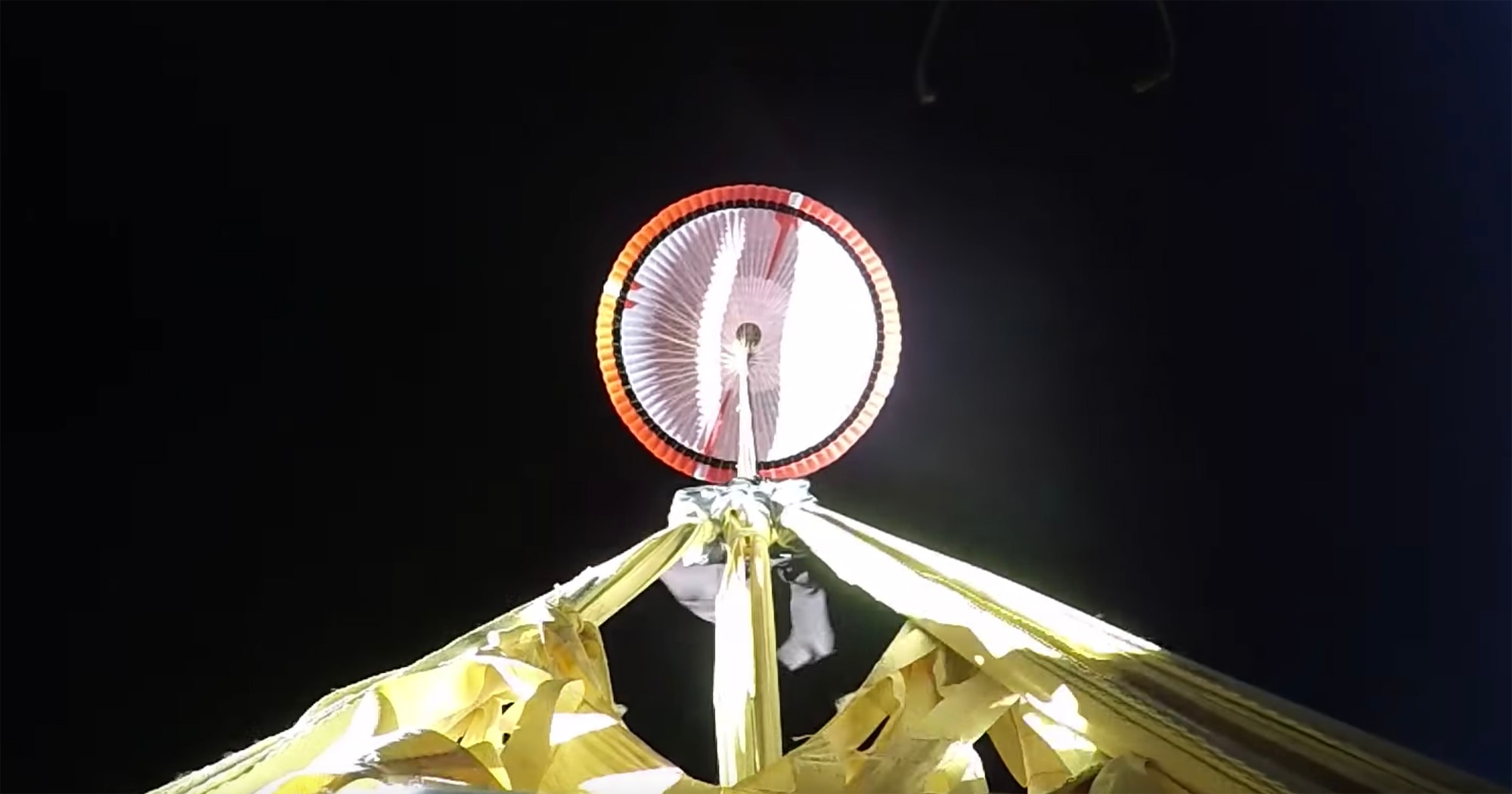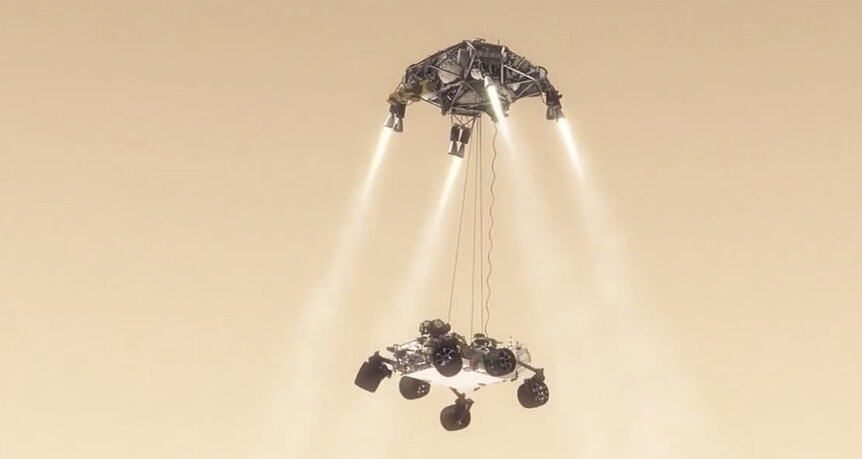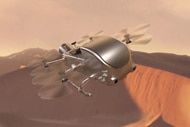Create a free profile to get unlimited access to exclusive videos, sweepstakes, and more!
Watch NASA test a supersonic Mars mission parachute in super slow motion

Landing on Mars is very, very hard.
NASA's had a pretty good record of it, though. One reason is because they test their equipment under very stressful conditions — as close to the real thing as possible — to make sure they work.
In that spirit, they just tested the Advanced Supersonic Parachute Inflation Research Experiment (ASPIRE), the parachute system that will be a crucial part of Mars 2020's landing. The parachute will slow the spacecraft from supersonic speeds in the Martian atmosphere to merely subsonic. And the video of the unfurling and deployment is mesmerizing!
The video starts with the sounding rocket launch that takes the parachute assembly high into Earth's atmosphere. Sounding rockets are ballistic rockets (that is, they don't go into orbit). In a gorgeous segment starting at about 30 seconds, the video switches to a camera onboard the payload at about 30 seconds, and you can see the rocket fall back to Earth.
At 1:09 the parachute deploys, and it apparently works perfectly. At 1:19 the scene repeats, but in slow motion, and it's mesmerizing. The parachute opens like a blooming flower (though, distressingly, for a second or so it reminded me strongly of a demogorgon). Just lovely.
This part of the mission was done at an altitude (42 kilometers) and speed (1.8 times the speed of sound) mimicking what the system will go through above Mars, to make sure everything is tested under as close to realistic conditions as possible. And it worked.
That's good news, because the parachute is critical to the mission's success. Mars has an atmosphere that you can't ignore: To land just using rockets you'd have to slow down enough to prevent burning up in the atmosphere, and that means carrying a lot of fuel — too much fuel to practically carry. Using just a parachute isn't possible either; the atmospheric pressure at the surface is a mere 0.6% of Earth's (give or take, depending on the season and even the time of day) so there's isn't enough air there to slow you enough to land safely.
So you have to use both. Use a parachute at high altitude, slow your craft down, then use rockets to slow it further to land. That's how Curiosity made it down, using a plan that would make Wile. E. Coyote proud: As it entered the atmosphere, a heat shield slowed it from interplanetary to merely hypersonic speeds. Then a parachute deployed, slowing it further. That was ejected, then a "skycrane" — basically a vertically-descending rocket-powered erector set — lowered the rover via wires, and when the wheels touched down on the Martian surface the skycrane powered up and flew away, to avoid damaging the rover.
Like I said. Wile E. Coyote.
And now they're going to do it again, because in the summer of 2020, NASA will launch the Mars 2020 rover to the fourth rock from the Sun, and it'll land the same way Curiosity did (with some improvements based on lessons learned). It's nice to see the parachute system functioning properly
The purpose of the Mars 2020 mission is to investigate the habitability of Mars, to look for signs of past (microbial) life, and to collect samples for future study (it will leave them on Mars for easier pickup later, assuming a future mission will do so). It will also check the place out to see how we can better prepare to send humans there.
That's still a long way off, but I think a necessary step in exploring space. Not the only one, not the first, and not the last, but it has its place in the timeline of future history. Humans will one day step foot on Mars, and these rovers will help light the way.















